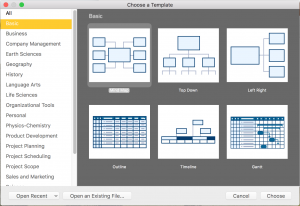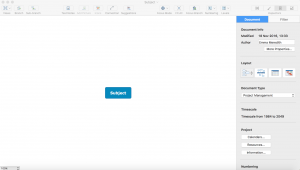Introduction
MindView is a mind mapping software developed and sold by Matchware. With it, the user creates visual maps as such, known as mind minds or spider diagrams, to lay out summaries of subjects split into multiple subcategories with small snippets or prompts of information that is important. It’s a great and straightforward way to organise and layout ideas of a brainstorm, and so therefore is a really useful educational tool. It’s available online, and as downloadable software on Microsoft and Mac. As it was first developed on Microsoft, that is the most extensive version of the software with the most features in comparison.
Uses
MindView is such a useful tool for many purposes and environments. All in a way educational/informative but with different applications. For a student, it’s a great revision tool, and with MindView being so intuitive it goes way beyond simply creating an electronic version of a hand-written mind map. With MindView you can create collapsable “branches” of your mind map which could be helpful in hiding information so you can test yourself on it and then check. You can also attach any of the 1500+ clip art to act as picture prompts or any other forms of multimedia including your own.
There are also many map “styles” to choose from, as seen below, meaning you can alter the map to a style, in both shape and colour scheme, that works best for you to help the information best transfer. As well as the basic different “styles” there’s also a multitude of templates to choose from so that you can also create not just mind maps but progress charts and breakdown graphs, using the Gantt view, which are especially helpful in an office situation so that progress of jobs or projects can easily be shown visually for all employees to access and understand.

It also boasts multiple calculation features, allowing you to use several built-in functions to add etc numerical values, and this can also be set to transfer through branches so that higher branches represent the sums of lower branches revealing not only the total of all the sums but the individual breakdowns of the numbers in a concise and visually-appealling way.
One of the best features of MindView is it’s transferability. Transferring/Eporting and Importing individual maps to other programmes such as Microsoft Word or Excel is a breeze, with them transferring across and remaining in format that is appropriate for the programme. It’s also very easy to add in hyperlinks to parts of text taking you straight to a page on the context of the text if you should so want, as well as other documents, sounds, animations (as provided by Flash), videos and more.
Ease Of Use
With a similar interface to the Microsoft Office collection, as seen below, it feels like a really familiar software to use, with this also reflected in it’s ease of use. This and the clear design makes it a really friendly programme to get to grips with.

As you can see, the layout is very similar to Microsoft Word, in that it is very approachable and every button is labelled, meaning you don’t need an instruction manual to understand how it works. All in all MindView is a really easy and helpful tool, especially for educational purposes if you learn in a visual way.